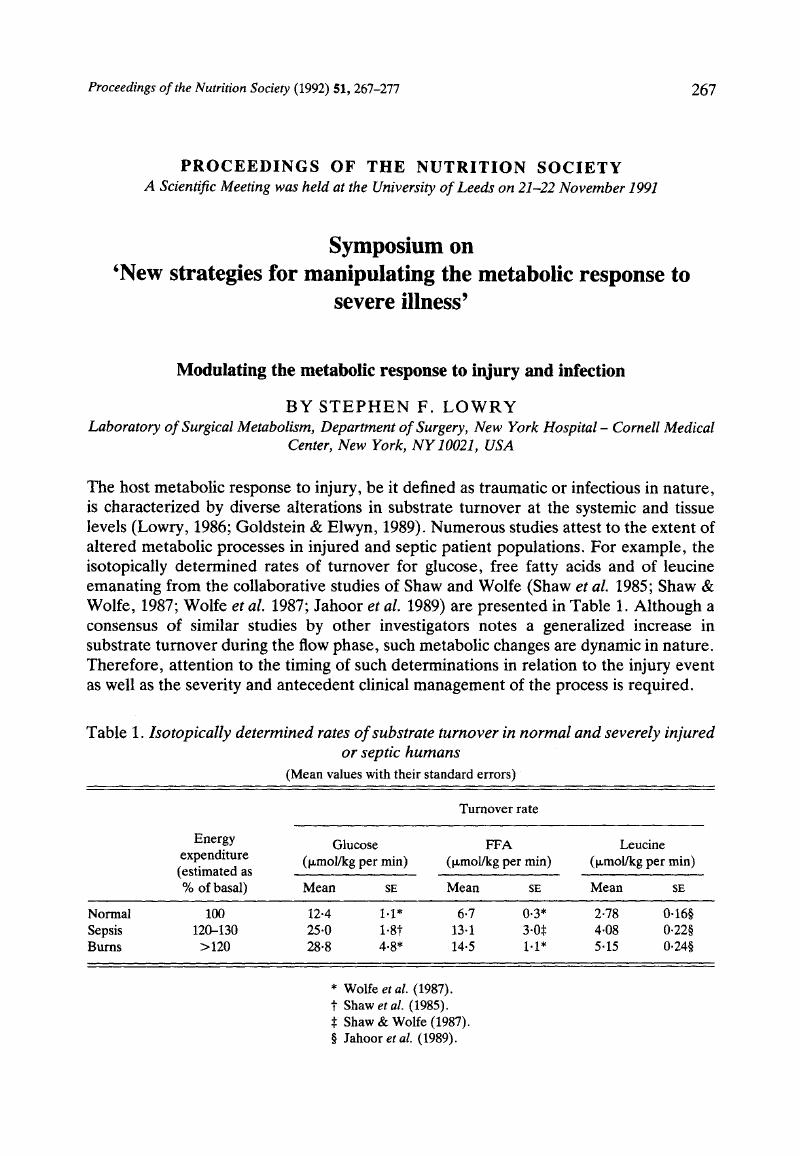Crossref Citations
This article has been cited by the following publications. This list is generated based on data provided by Crossref.
Lowry, S. F.
1993.
Metabolic Support of the Critically Ill Patient.
Vol. 17,
Issue. ,
p.
333.
Stein, TP
and
Gaprindashvili, T
1994.
Spaceflight and protein metabolism, with special reference to humans.
The American Journal of Clinical Nutrition,
Vol. 60,
Issue. 5,
p.
806S.
Jones, M O
Pierro, A
Hashim, I A
Shenkin, A
and
Lloyd, D A
1994.
Postoperative changes in resting energy expenditure and interleukin 6 level in infants.
Journal of British Surgery,
Vol. 81,
Issue. 4,
p.
536.
Shenkin, Alan
1994.
Cytokine changes in the postoperative period.
Proceedings of the Nutrition Society,
Vol. 53,
Issue. 1,
p.
159.
Wojnar, Margaret M.
Hawkins, William G.
and
Lang, Charles H.
1995.
Nutritional Support of the Septic Patient.
Critical Care Clinics,
Vol. 11,
Issue. 3,
p.
717.
Matuschak, G. M.
1995.
The Splanchnic Circulation.
Vol. 23,
Issue. ,
p.
73.
Matuschak, George M.
1996.
LUNG-LIVER INTERACTIONS IN SEPSIS AND MULTIPLE ORGAN FAILURE SYNDROME.
Clinics in Chest Medicine,
Vol. 17,
Issue. 1,
p.
83.
Nakano, Masayuki
Knowlton, Anne A.
Dibbs, Ziad
and
Mann, Douglas L.
1998.
Tumor Necrosis Factor-α Confers Resistance to Hypoxic Injury in the Adult Mammalian Cardiac Myocyte.
Circulation,
Vol. 97,
Issue. 14,
p.
1392.
Zadeh, A. R. Bosagh
and
Emery, P. W.
1998.
Some aspects of the metabolic response to surgical trauma.
Proceedings of the Nutrition Society,
Vol. 57,
Issue. 02,
p.
225.
Stein, T.P.
1999.
Vol. 7,
Issue. ,
p.
49.
Lee, Kyongbum
Berthiaume, François
Stephanopoulos, Gregory N.
and
Yarmush, Martin L.
2003.
Induction of a hypermetabolic state in cultured hepatocytes by glucagon and H2O2.
Metabolic Engineering,
Vol. 5,
Issue. 4,
p.
221.
Golts, Eugene
Choi, Jua
Fuchs, Samme
and
Angle, Niren
2007.
Trauma.
p.
1414.



